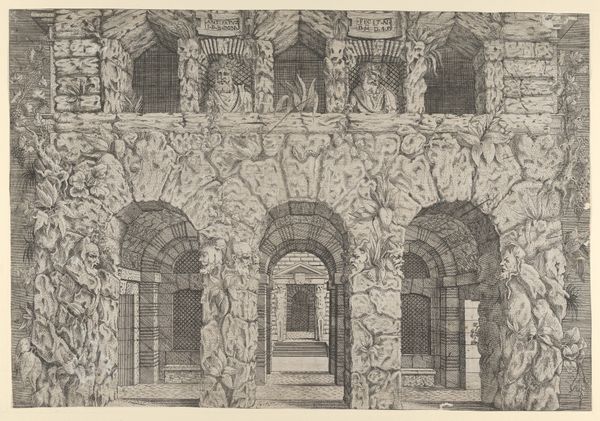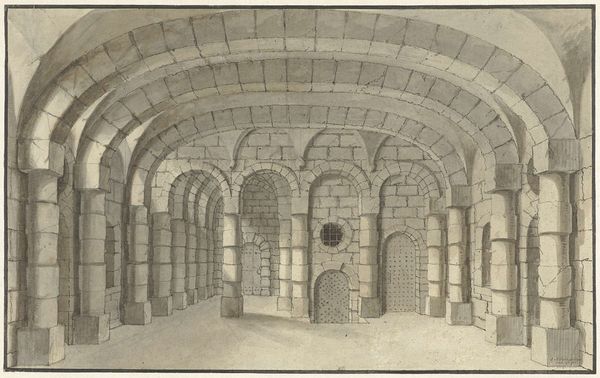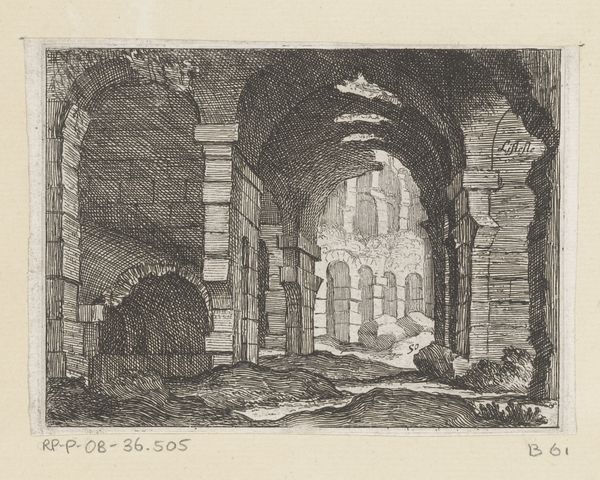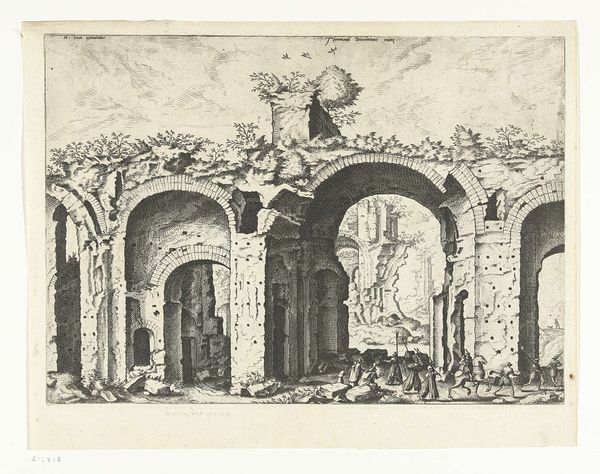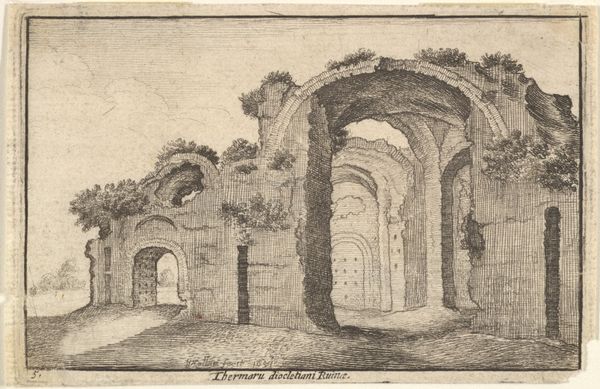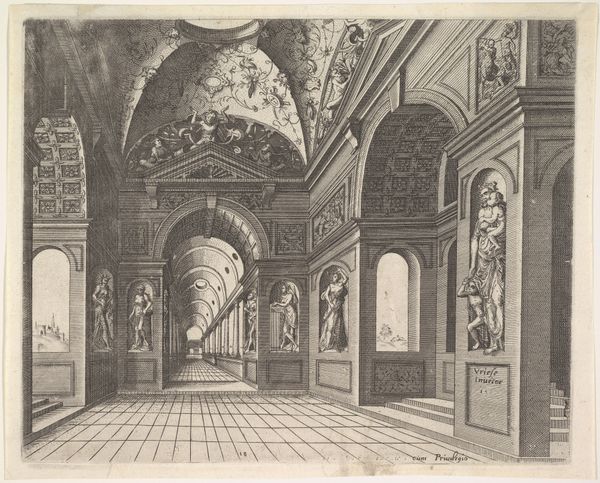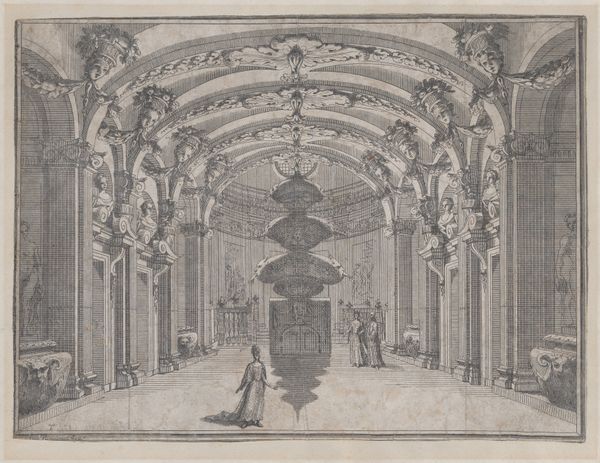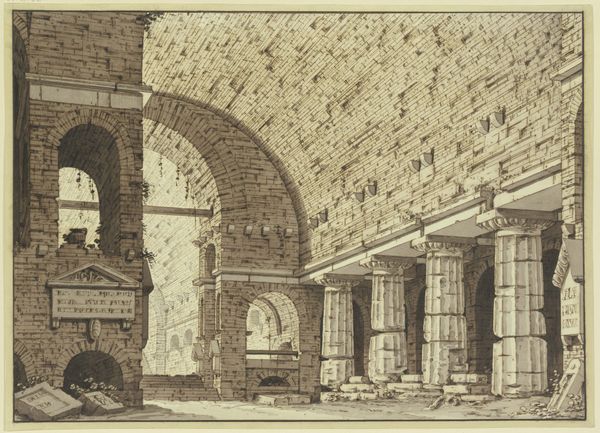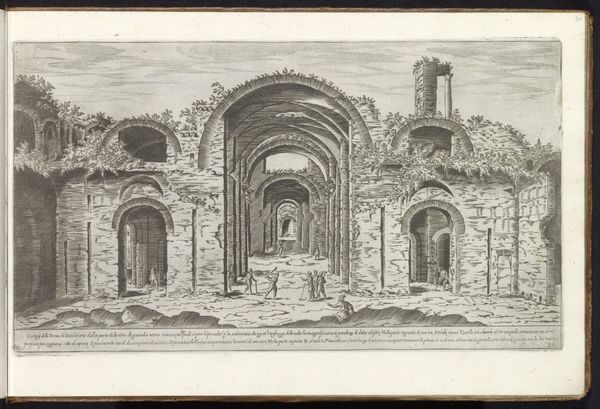
Interior of a prison in which sits a woman (possibly a theatre set) 1680 - 1710
0:00
0:00
drawing, print, etching, architecture
#
drawing
#
baroque
# print
#
etching
#
landscape
#
figuration
#
line
#
history-painting
#
architecture
Dimensions: sheet: 6 1/16 x 8 7/8 in. (15.4 x 22.5 cm)
Copyright: Public Domain
Curator: Here we have "Interior of a prison in which sits a woman (possibly a theatre set)" by Carlo Antonio Buffagnotti, an etching from the late 17th or early 18th century currently residing at the Metropolitan Museum of Art. Editor: Wow, talk about atmosphere! This piece just oozes…dampness? Claustrophobia? It feels like a stage set for a tragic opera, all gloomy arches and implied secrets. Curator: The theatrical feel might be quite literal! The title does propose that this scene could very well depict a stage design, a hypothesis reinforced by the era’s growing fascination with perspective and dramatic presentation in both art and theater. This opens avenues for exploring the representation of women in entertainment and real spaces. Editor: You know, it’s the crosshatching that gets me. Look at how it builds up this incredible density of shadow! And that lone figure…she looks utterly resigned. Is she imprisoned physically, or just by circumstance, do you think? Curator: I find the solitary female figure fascinating as well. During this time, women were often portrayed as allegorical figures representing virtues or vices or, alternatively, were often put on display within social environments that constrained them in reality. What’s unique is the space depicted—it’s a site where, through societal frameworks of control, women, specifically, suffered greatly. Editor: Right? The prison setting adds this layer of institutional oppression. But there’s also something powerful about her solitude. She's present, visible in this structure designed for invisibility. Almost a rebellion, wouldn't you say? Curator: In a way. But her posture—defeated. Buffagnotti uses her presence to speak volumes about the limited autonomy afforded to women within socio-political structures, rendering this more than a historical depiction, and inviting contemporary reflections about gender, confinement, and the subtle constraints. Editor: Hmmm…it definitely resonates, makes you think about how much has, and hasn't, changed. So much grey area in this gray etching, if you get my drift! I walk away with way more questions than answers. Curator: I find this etching a powerful commentary on how spaces can simultaneously imprison and reveal—and on the enduring challenge of female agency. It’s more than ink; it’s an investigation of freedom.
Comments
No comments
Be the first to comment and join the conversation on the ultimate creative platform.

